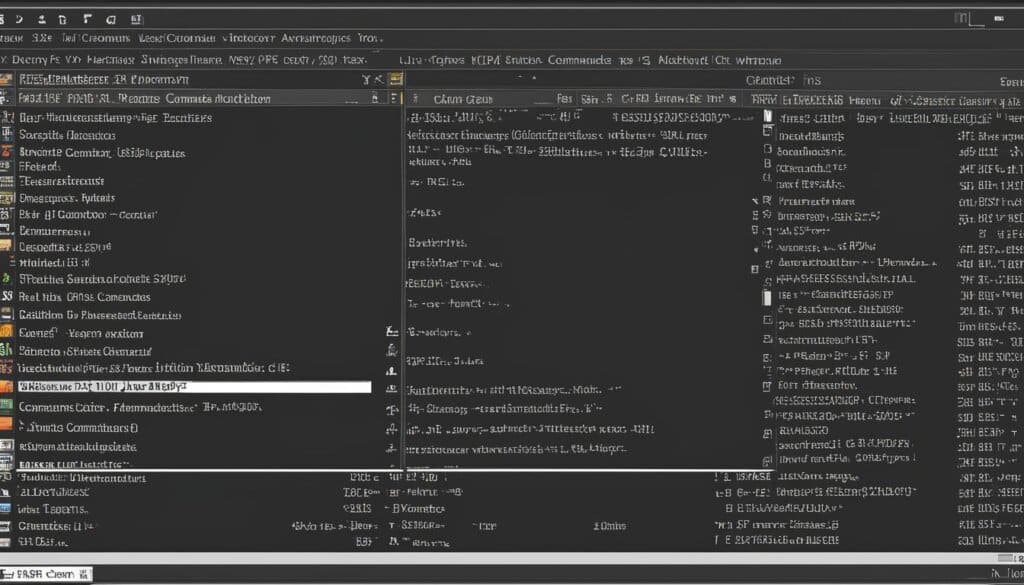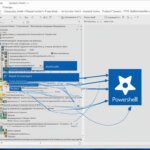Table of Contents
A .bat file, also known as a batch file, is a script file that stores a sequence of commands to be executed in a specific order. It is commonly used to automate tasks on Windows platforms. Whether you need to perform repetitive actions, run multiple processes, or load programs, a .bat file can simplify and streamline your workflow.
Batch files are created in a text editor, such as Notepad, and typically have the .bat or .cmd file extension. They can be run using the command prompt or other tools like PowerShell and Bash. With the power of batch files, you can automate routine tasks, saving you time and effort.
Creating and Executing a Batch File
To create a batch file, you’ll need a text editor like Notepad. Begin by entering the @echo off command, which turns off the display of commands in the command prompt. Then, add the desired commands, each on a new line.
For example, the echo command can be used to display messages, the pause command can halt the execution for user input, and commands like cls can clear the command prompt screen.
Once all the commands are added, save the file with the .bat extension in double quotes. To execute the batch file, double-click on it or run it from the command prompt.
An Example Batch File:
@echo off
echo Batch file example
pause
cls
Batch File Creation Process:
- Open a text editor like Notepad.
- Enter the @echo off command to disable command display.
- Add the desired commands, each on a new line.
- Save the file with the .bat extension in double quotes.
- Double-click on the file or run it from the command prompt to execute.
Basic Commands in Batch Files
When creating batch files, it’s essential to understand the basic commands that are commonly used. These commands form the building blocks of batch file scripts and allow for the automation of tasks. In this section, we will explore some of the fundamental batch file commands.
Echo command
The echo command is used to display messages in the command prompt. It can be used to provide information or instructions to the user. For example, echo “Hello, World!” will display the message “Hello, World!” in the command prompt.
Title command
The title command is used to change the title text in the command window. It allows you to provide a descriptive title for your batch file script, making it easier to identify when multiple windows are open. For example, title My Batch File will change the title of the command window to “My Batch File”.
Rem command
The rem command is used to add comments to the code. Comments are non-executable lines that provide explanations or notes within the batch file script. They are ignored by the command processor when executing the script. For example, rem This is a comment will add a comment stating “This is a comment” in the batch file.
Cls command
The cls command is used to clear the command prompt screen. It removes all previously displayed commands and output, providing a clean slate. This is particularly useful when you want to start fresh or improve the readability of your batch file script. Simply use the cls command to clear the screen.
Pause command
The pause command is used to pause the execution of the batch file. It prompts the user to press any key to continue, allowing for user interaction during the script execution. This can be helpful when you want to ensure that the user has read a message or wants to pause the script for further action.
Start command
The start command is used to open a website in the default browser. It allows you to quickly launch a URL from within a batch file. For example, start http://www.example.com will open the website “http://www.example.com” in the default browser.
Ipconfig command
The ipconfig command is used to display network information. It provides details about the IP configuration of the computer, including the IP address, subnet mask, and default gateway. This command is particularly useful for troubleshooting network connectivity issues or gathering network-related information.
Ping command
The ping command is used to test network connectivity between devices. It sends ICMP echo request packets to a specific IP address or hostname and measures the response time. This command can help identify network connectivity issues and determine the responsiveness of a network device.

These basic commands can be combined and customized to create more complex batch file scripts. Understanding their functionality and proper usage is crucial for effectively automating tasks and optimizing batch file execution.
Advanced Features of Batch Files
In addition to basic commands, batch files can utilize advanced features through tools like PowerShell and Bash. These scripting languages offer more flexibility and functionality for creating batch file scripts. PowerShell, a command-line shell and scripting language developed by Microsoft, allows for the automation of complex tasks and offers advanced scripting capabilities. Bash, on the other hand, is a Unix shell and command language that provides powerful scripting features for batch file automation. These tools can be used to create more advanced and customized batch file scripts.
“With PowerShell, administrators can leverage advanced features such as object-oriented programming, modules, and script debugging,” said Jonathan Smith, a PowerShell expert. “It enables them to write more robust and efficient batch file scripts, making automation tasks easier and faster.”
Benefits of PowerShell for Batch Files:
- Advanced scripting capabilities for complex tasks
- Object-oriented programming for more efficient code
- Modularity with the use of modules
- Improved script debugging for easier troubleshooting
“Bash is widely used in the Unix world and provides a wealth of powerful scripting capabilities,” shared Sarah Johnson, a Bash scripting enthusiast. “It’s especially valuable for automating repetitive tasks and managing system configurations.”
Key Features of Bash for Batch Files:
- Unix shell with extensive command-line tools
- Powerful scripting capabilities for automation
- Easy management of system configurations
- Compatible with various Unix-based operating systems
| Comparison of PowerShell and Bash for Batch Files | PowerShell | Bash |
|---|---|---|
| Platform | Windows | Unix-based |
| Scripting Capabilities | Advanced | Powerful |
| Object-Oriented Programming | Supported | N/A |
| Module System | Yes | N/A |
| Script Debugging | Available | N/A |
| Command-line Tools | Basic | Extensive |
| System Compatibility | Windows-based | Unix-based |
Converting and Running Batch Files
Batch files, typically written as .bat or .cmd files, can be converted to the EXE format using various command-line tools or the built-in Windows utility called IExpress. This conversion transforms the batch file into an executable file, allowing it to function more like a standalone application. The process of converting a batch file to an EXE involves packaging the script and its associated resources into a single self-contained file.
Once converted to EXE, the batch file can be run on different operating systems, including Windows, DOS, and Unix. However, it’s important to note that each operating system may have its own variations in file extensions and slightly different syntax. It’s essential to consider these differences and make the necessary adjustments to ensure the batch file runs smoothly on the intended platform.
While batch files offer convenience and automation, it’s crucial to exercise caution when running them, particularly if obtained from unknown or untrusted sources. Due to their executable nature, batch files have the potential to contain malicious code that could harm your system. It’s always advisable to verify the source and contents of a batch file before executing it on your computer.
FAQ
What is a .bat file?
A .bat file, also known as a batch file, is a script file that stores a sequence of commands to be executed in a specific order. It is commonly used to automate routine tasks on Windows platforms without requiring user input.
How do I create a batch file?
To create a batch file, open a text editor like Notepad and start by entering the “@echo off” command, which turns off the display of commands in the command prompt. Then, add the desired commands, each on a new line. Once all the commands are added, save the file with the .bat extension in double quotes.
What are some basic commands used in batch files?
Some basic commands commonly used in batch files include the echo command for displaying messages, the title command for changing the command window title text, the rem command for adding comments to the code, the cls command for clearing the command prompt screen, and the pause command for stopping the execution of the batch file.
Are there any advanced features for batch files?
Yes, batch files can utilize advanced features through tools like PowerShell and Bash. PowerShell is a command-line shell and scripting language developed by Microsoft, offering advanced scripting capabilities. Bash, on the other hand, is a Unix shell and command language that provides powerful scripting features for batch file automation.
Can batch files be run on different operating systems?
Yes, batch files can be run on different operating systems such as Windows, DOS, and Unix. However, they may have different file extensions and slightly different syntax. It is important to note that caution should be exercised when running batch files from unknown or untrusted sources, as they can potentially contain harmful code.
How can I convert a batch file to an EXE format?
Batch files can be converted to the EXE format using various command-line tools or Windows built-in IExpress. This conversion allows the batch file to function more like an application file.













